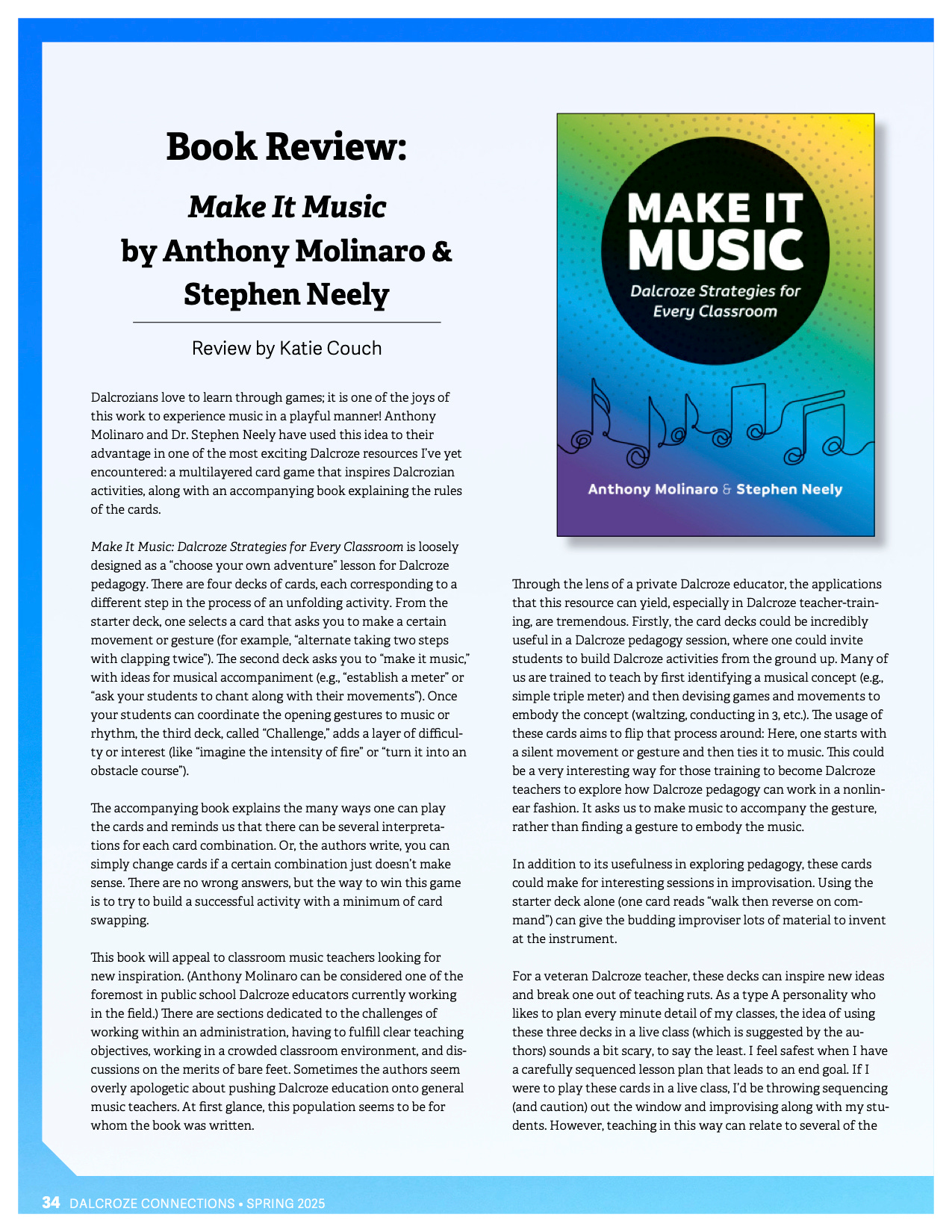Over the 100 odd years of Dalcroze practice, many strategies have emerged that have become hallmarks of the method. In our book, MAKE IT MUSIC, Stephen Neely and I discuss these strategies at some length and offer some practical ways to use them in a modern general music classroom. In our video series, we’ve been expanding on these ideas and offering some ways to incorporate the cards in your process. In this post I’ll break down the QR strategy and share our latest video! But first…
Housekeeping:
Thanks to AMAZING Dalcroze teacher and writer Katie Couch for reviewing MAKE IT MUSIC in the latest edition of Dalcroze Connections magazine. Here is the first part of her review:
There are some amazing articles in this edition so I recommend you check it out!
If you, for some unknown reason, haven’t bought MAKE IT MUSIC yet, you should do so right now!
From the Archive:
Boom Bop : Quick Reaction Game
Subscribe for free to MusicXT for Dalcroze-based lesson ideas and content! Welcome!
The Quick Reaction strategy is fairly easy to understand. Similar to a follow, it involves the leading teacher changing elements, altering the musical accompaniment, in an improvised manner. The main difference between the two involves the actual experience for the participant. In a follow, the elements change in such a way that the participants must recognize the change and adapt to the new element AFTER IT HAS CHANGED. The Quick Reaction activity involves giving a cue or signal the the change is happening, and the goal is to have EVERYONE change in unison.
Often I’ll use a QR activity to then move into a follow activity, this is a way to allow the students to notice the difference in FEELING between the two elements and then be able to recognize this difference without the cue. For instance, we might do an activity in which we practice a conducting pattern in 3 and in 4. Then I might change between the two using a QR strategy. Finally I’ll change between them without cue, and see if the students can notice that it has changed.
Here is an example of this strategy:
The MAKE IT MUSIC Deck is a great way to practice implementing the QR strategy and finding ways to make it a part of your teaching practice. You might use the QR strategy to practice a particular element of your emerging activity or you might make it the ultimate goal!
Leave a comment and let me know how you use QR strategies in your classroom and what you think your students learn from these activities!






